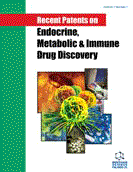Abstract
Osteoporosis characterized by low bone mass and structural deterioration of bone tissue; has a huge impact on public health through high morbidity, mortality and economic costs associated with resultant fractures. The prevention and treatment of fragility fractures in the osteoporosis patients worldwide becomes an important issue in the current clinical practice. Women often have an accelerated bone loss after menopause and result in a lower bone mass than men. Since the bone loss is irreversible, early prevention and treatment of osteoporosis is important in the early postmenopausal period. The goal of prevention needs to be not only effective, but also safe, to diminish the risk of vertebral, hip and other nonvertebral fractures. Non-pharmacological treatments, such as calcium, vitamin D, exercise and reduction of risk factors may diminish the impact of menopause and age-mediated bone loss. Current pharmacological options available include bisphosphonates, calcitonin, hormone replacement therapy, selective estrogen receptor modulators, teriparatide, and strontium ranelate, etc. Lots of natural products including dietary components and herbal products have also been demonstrated to be capable of modifying bone metabolism, particularly of inhibiting bone resorption. These natural products may provide as an alternative treatment for osteoporosis. More than 150 patents have recently been issued for the prevention and treatment of postmenopausal osteoporosis. The development of other new medications also sheds light on either prevention or treatment of osteoporosis, such as human monoclonal anti-RANKL antibody, cathepsin K inhibitors, and cannabinoid-based drugs.
Keywords: Postmenopausal osteoporosis, fragility fractures, pharmacological treatment, natural products
 40
40





















